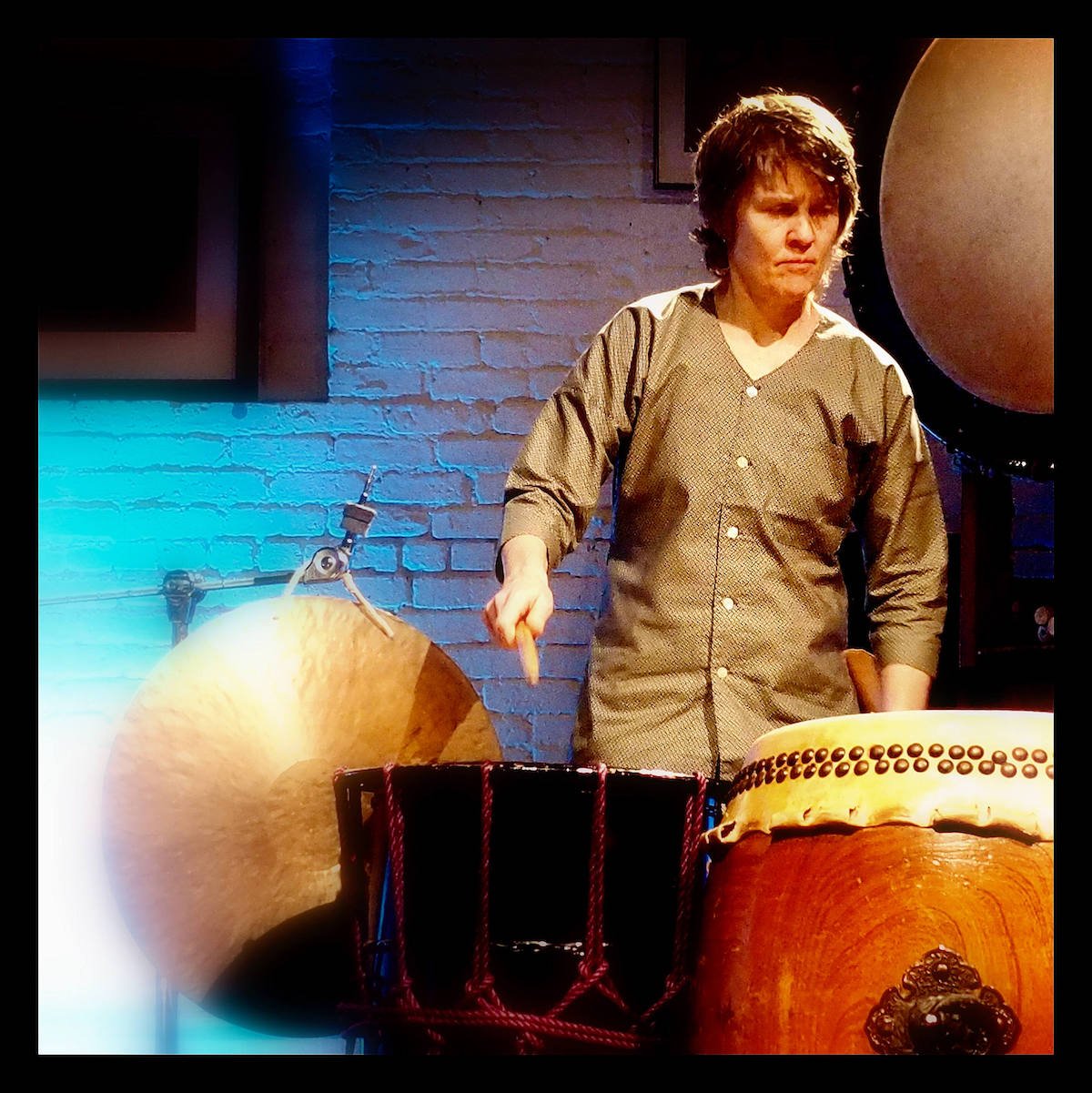Interview: Barbara Merjan talks percussion, taiko, and working on Broadway shows

I have always enjoyed hanging out and talking with Barbara and this interview was another one of those occasions. We first met when I was visiting Kaoru Watanabe in Brooklyn, realizing we both work in a variety of genres a percussionist, drummer, and taiko player. Barbara is a highly accomplished and experienced musician who speaks with thoughtfulness and humility. I was always happy to see her participate in Edo Bayashi classes taught by Suzuki sensei or myself because I knew that she was appreciating the musical intricacies found all throughout that music. We might find ourselves working in incredibly eclectic musical situations, but in fact, it all seems to be connected by the somewhat bizarre reality that we just hit things for a living. I found Barbara’s stories about the Broadway scene very interesting, especially about the issues of gender discrimination as well as the trend toward high-tech production where the musicians are placed in separate rooms rather than in the conventional orchestra pit.
Barbara sent me some video links of some projects she has worked on. The links are below and I would encourage everyone to check them out. She also sent me some audio tracks for me to include in the interview. They are:
I Wonder As I Wander - Julia Simpson’s Christmas album
Mad Coyote Madly Sings - The Character of American Sunlight (Jerome Kitzke)
The Swan and the Vulture - Teetering on the Verge of Normalcy (Guy Klucevsek)
Thank you to Barbara for generously making time to record this conversation. I hope you enjoy listening as much as I did interviewing.

Barbara Merjan is a drummer and percussionist who has worked in a variety of musical contexts, including Jazz (Newport Jazz Festival, 1980, 2002), Broadway (Cabaret, Sunset Blvd., Cats, Miss Saigon, Fiddler on the Roof, Big, Elf, The Unsinkable Molly Brown….) Pop/Rock (Robert Palmer, Lesley Gore, Women of Woodstock) and Contemporary American Classical (Mad Coyote Ensemble, Linda Fisher).
In addition to these musical styles, she has been studying, performing and teaching Japanese taiko for the past 15 years - Wesleyan University (2016-2020), Kaoru Watanabe Taiko Center.
Ms. Merjan has also recorded in all these genres.
For many years, Ms. Merjan brought music workshops into the NYC public schools via Music Outreach. The workshops were an introduction to music for younger grades with an added focus on reading skills. Along with musical introductions we always told a children’s story with musical accompaniment.
Bachelor of Music: Ithaca College 1981
Master of Music: NYU 1991
Video Links
An excerpt from a piece I performed in with Fumi. It is Blood Moon. We did it in Jan. 2020.
https://www.garrettfisher.com/blood-moon
A video from a perfomance a in 2016, of Paha Sapa, by Jerome Kitzke:
https://youtu.be/WRSPPj12vcY
Mad Coyote Madly Sings, also by Jerome Kitzke:
https://youtu.be/Us-d3xv-wyQ
4th movement of Yukiwatari by Midori Larsen. We performed at the end of 2019:
https://youtu.be/ciD7mTyTLUs


































































